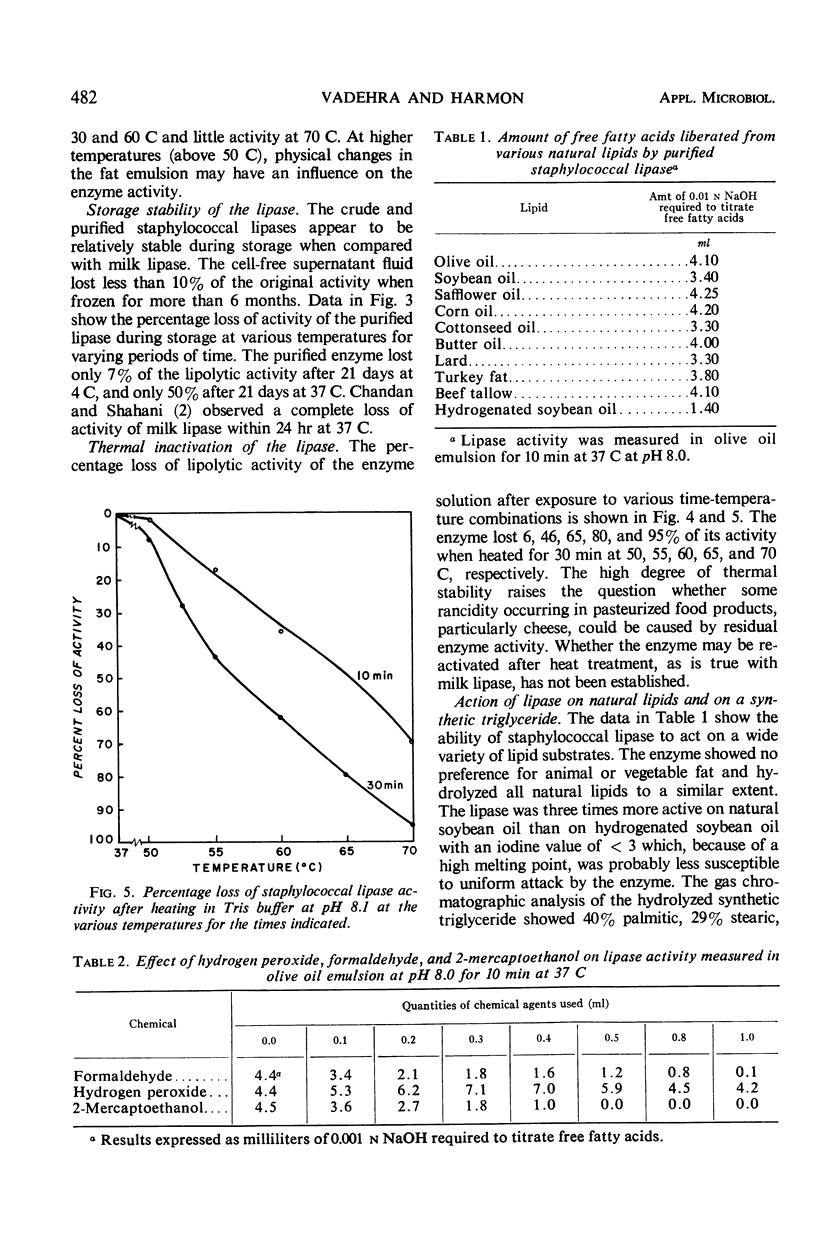Abstract
Purified staphylococcal lipase had an optimal pH of 8.3 for activity at 37 C, and an optimal temperature of 45 C at pH 8.0. During storage, the enzyme lost less than 10% of the activity over a period of 21 days at 4 and -23 C. The enzyme retained 93% of the activity when heated for 30 min at 50 C and was 95% destroyed in 30 min at 70 C. The purified lipase was capable of hydrolyzing a variety of natural fats and oils. However, the enzyme was three times more active on nonhydrogenated soybean oil than on hydrogenated soybean oil with an iodine value of <3.0. The enzyme was also capable of hydrolyzing fatty acids on the α, β, and α′ positions of a synthetic mixed triglyceride. In general, the presence of oxidizing agents increased the activity and the presence of reducing agents decreased the activity of the lipase enzyme.
Full text
PDF



Selected References
These references are in PubMed. This may not be the complete list of references from this article.
- Alford J. A., Pierce D. A., Suggs F. G. Activity of microbial lipases on natural fats and synthetic triglycerides. J Lipid Res. 1964 Jul;5(3):390–394. [PubMed] [Google Scholar]
- Chandan R. C., Shahani K. M. Role of sulfhydryl groups in the activity of milk lipase. J Dairy Sci. 1965 Nov;48(11):1413–1418. doi: 10.3168/jds.S0022-0302(65)88490-9. [DOI] [PubMed] [Google Scholar]
- SHAH D. B., WILSON J. B. EGG YOLK FACTOR OF STAPHYLOCOCCUS AUREUS. II. CHARACTERIZATION OF THE LIPASE ACTIVITY. J Bacteriol. 1965 Apr;89:949–953. doi: 10.1128/jb.89.4.949-953.1965. [DOI] [PMC free article] [PubMed] [Google Scholar]
- WILLS E. D. The relation of metals and -SH groups to the activity of pancreatic lipase. Biochim Biophys Acta. 1960 Jun 3;40:481–490. doi: 10.1016/0006-3002(60)91389-5. [DOI] [PubMed] [Google Scholar]


